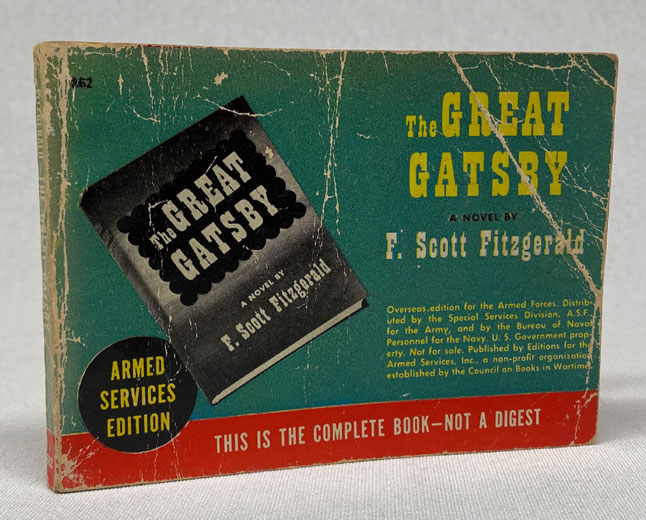“Gatsby, may be taken not only as an individual character but also as a symbolic or even allegorical character. It comes to seem more and more plausible that Gatsby, divided between power and dream, is to be thought of as standing for America itself. Ours is the only nation that prides itself upon a dream and gives its name to one — “the American dream … the stock phrase of the full-page advertisement and the second-rate poem.” — Preface, Lionel Trilling, The Great Gatsby, New Directions, 1942.
Who Made Gatsby Great? Podcast discussion (38 mins)
It’s a novel whose diamond-cut prose is almost perfect. And despite being less than 200 pages in length it ranks as one of the most brilliantly conceived novels ever written. The pace of its drama is just so neat and so effective. But not everybody realised this at the time. Initially obscure, The Great Gatsby gained national prominence after WWII through the Armed Services Edition and leftist critical reappraisal, notably by Lionel Trilling. The novel’s transformation into an allegory of the American Dream overshadowed claims about its real-life inspiration, Max Gerlach. As Scott would tell his friend, John Peale Bishop in August 1926, Gatsby had started as one man he knew before turning into himself. It had been an intensely personal tale. In the end it is Scott’s own countenance behind Gatsby’s mask, not Max’s. The likenesses to Max were mainly superficial. He was a bootlegger who was living like a millionaire on Long Island and who took on the mannerisms of an English aristocrat. He took Max’s traits and his lies but little else. Behind Gatsby was Max and behind Max was Scott. The soul of the character was the author himself. Through biography, film, and cultural mythmaking, Gatsby evolved from flawed bootlegger and parvenu into a symbol of hope and national identity, securing its place as an enduring American classic.
This podcast also explores the parallels between Jay Gatsby’s death in Fitzgerald’s novel and the crucifixion of Christ, depicting Gatsby as a martyr who, like President Lincoln before him, shoulders the ‘national sins’ of America. It links Gatsby’s fate to American history, notably Lincoln’s Good Friday assassination, and examines themes of sacrifice, unattainable dreams, reckless wealth, and the pursuit of happiness. In the 1943 Armed Services Edition of the novel they described Jay Gatsby as a “deathless figure”? They also said that his rise to prominence could never have taken place in any other country but America, that it was “American to the core”? What did they mean by any of that?
In The Great Gatsby, F. Scott Fitzgerald’s personal struggles and the illusions of prosperity are woven into a meditation on ambition, class, broken marriages and spiritual disillusionment. So how did a story that was semi-autobiographical, with a character that was a blend of himself and a guy he knew, become such a potent national allegory?

The American Dream and Gatsby — How the world has come to see it
The American Dream, at its core, promises that anyone, regardless of background, can achieve success, wealth, and happiness through hard work and determination. In the 1920s, this idea was vibrant, fueled by post-war prosperity and a booming economy. The Great Gatsby, set in this Jazz Age, captures amd critiques both the allure and the hollowness of this dream through its characters and their pursuits.
So, what does The Great Gatsby tell us about the American Dream? Is it really a critique of its failure? It’s a powerful idea that inspires hope and ambition, but it’s also fragile. It can lead to obsession, corruption, or despair when it prioritizes wealth over meaning or ignores the barriers of class and circumstance. Fitzgerald doesn’t reject the Dream outright, its not a triumph or a failure. Instead, he warns us of its limits. Gatsby’s tragedy lies not in dreaming but in dreaming too narrowly, chasing a flawed vision that could never fulfill him.
Podcast story and research by Alan Sargeant. Hosted by Insightful Jack.